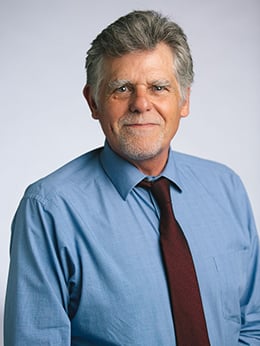 More Coloradans have died from overdoses of opioids such as hydrocodone, oxycodone and fentanyl since 2011 than have been killed in homicides.
More Coloradans have died from overdoses of opioids such as hydrocodone, oxycodone and fentanyl since 2011 than have been killed in homicides.
Helping patients cope with severe pain is a priority for dentists and physicians, but the opioid epidemic requires health-care practitioners to face a balancing act. Prescription opioids such as Vicodin, Percocet and OxyContin are powerful painkillers that provide real relief. However, they can be addictive, and misuse can have devastating and even deadly consequences. Every year since 2011, more Coloradans have died of opioid overdoses than have died in homicides.
[cucalloutbox align="left" color="" class="" size=""]
CU Anschutz fights the opioid epidemic
This is the first in a series of articles that examines how University of Colorado Anschutz Medical Campus faculty and students are finding ways to solve the opioid epidemic.[/cucalloutbox]
Dentists, including oral and maxillofacial surgeons, are on the front lines of the epidemic, writing about 12 percent of all prescriptions for immediate-release opioids. Individually and as a profession, they have to strike the right balance between managing pain and preventing abuse. Now, the University of Colorado School of Dental Medicine (SDM) is coming to their aid.
“We’re taking opioid abuse very seriously and doing whatever we can to address the problem,” said Michael Henry, DDS, PhD. Henry is the school’s associate dean for academic affairs, and he has spent his career training dentists and studying orofacial pain.
Henry and his colleagues at the School of Dental Medicine are just some of the researchers at the CU Anschutz Medical Campus fighting the opioid epidemic. CU Anschutz faculty members and students evaluate public health options, find new ways to track prescriptions and direct Colorado's major public education campaign. The state relies heavily on CU Anschutz to coordinate the response to the crisis, with the university providing the Colorado Consortium for Prescription Drug Abuse Prevention's director and the chairs of many of its work groups.
At the SDM, faculty look for alternatives to opioids, develop new prescribing standards and create new curriculums. Their work already has shown results that benefit dentists, physicians and patients.
Searching for and finding new approaches
Dentists want to start by finding effective pain relievers that will not cause addiction or dependence. That effort is paying off and leading to surprising findings, Henry said. One is that a combination of acetaminophen, which is the active ingredient in Tylenol, and ibuprofen, which is in Advil, can be more effective than opioids in the management of post-operative and procedural dental pain. Under the guidance of their dentists, recovering patients can take the combination of over-the-counter medicines longer without having to worry about getting hooked and can avoid common opioid side effects such as nausea and constipation.
 Michael Henry, DDS, PhD, is associate dean of the School of Dental Medicine.
Michael Henry, DDS, PhD, is associate dean of the School of Dental Medicine.
The SDM wants the dental community and patients to know that kind of new information.
“We’re really trying to get that message out,” Henry said. “The data is pretty strong that that’s a very, very potent combination.”
The school has developed guidelines about the best medications to prescribe depending on the type of pain, along with recommended dosages.
Better guidelines are important because opioids will continue to have a place in pain management, Henry said. While it is still appropriate to prescribe opioids after some dental surgical procedures where severe post-operative pain is expected, researchers are carefully evaluating the specific number of opioid-containing tablets that are prescribed. Improving best practices can help dentists identify when opioids are appropriate and help them do what’s best for patients.
[perfectpullquote align="right" cite="" link="" color="" class="" size=""]
Opioid abuse by the numbers
329 people died in Colorado from misusing prescription opioids in 2015
224,000 Coloradans misuse prescription drugs each year
Colorado ranks 15th in the nation for opioid abuse—down from second in 2011
[/perfectpullquote]
“We have to be concerned about opioid addiction, but we have to consider that in light of providing patients with proper pain management,” Henry said.
Through continuing education programs for current dentists, the school will share that protocol, as well as best practices for discussing pain and opioids with patients. The next course is on Feb. 25, and Henry will teach it along with Rachael Rzasa-Lynn, MD, who is director of the Interventional Pain Clinic in the School of Medicine, and Robert Valuck, PhD, RPh, who is the director of the Skaggs School of Pharmacy and Pharmaceutical Sciences’ Center for Pharmaceutical Outcomes Research and an opioid abuse expert.
Improving patients’ knowledge about painkillers
Henry said it is not enough for dentists to understand the latest research and best practices. Patients also need to be educated, and that includes helping them overcome misconceptions about painkillers.
Patients often assume that after a procedure they will be prescribed Percocet, Vicodin or a similar medication—after all, they’ve heard those are the most powerful. There also is the perception that if a medication needs a prescription, it must be better than what is available over-the-counter.
That perception is not true, Henry said, but it is difficult for dentists to change patient expectations. Patients could doubt their treatment, which has negative consequences for pain management.
“Patient expectation is our biggest challenge,” Henry said. “So much of pain relief is based on the expectation of the patient. The expectation of pain relief can actually activate brain regions that contribute to analgesia. If they are expecting that medicine to be effective, it has a greater chance of being effective. That’s basic pain science.”
%CODE-2017-02-03%
Meanwhile, institutions such as the SDM and organizations such as the American Dental Association continue pain management education and work to combat the epidemic.
“Every week I see new concerns regarding the role that dentists play in opioid abuse,” Henry said. “This is at the forefront of dentistry.”
